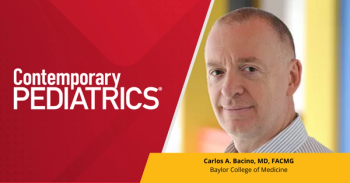
Propranolol effective for infant hemangiomas
The beta-blocker propranolol has been shown to clear or mostly clear infant hemangiomas after 6 months of treatment, according to preliminary findings from a clinical trial presented at the meeting of the American Academy of Dermatology in Miami Beach, Florida.
The beta-blocker propranolol has been shown to clear or mostly clear infant
The randomized clinical trial was conducted in 15 countries and included 456 infants aged 1 to 5 months with proliferating hemangiomas. Participants were randomized to placebo or to 1 of 4 propranolol regimens: 1 mg/kg per day for 6 months, 3 mg/kg per day for 6 months, or 1 of the 2 doses for 3 months followed by placebo for another 3 months. The primary endpoint was complete or near-complete resolution of a lesion at 24 weeks; secondary endpoints were minimal telangiectasia, erythema, skin thickening, soft-tissue swelling, or anatomical distortion. A total of 319 infants completed the 6 months of the study.
Researchers found the clearance rate to be 60.4% with 24 weeks’ of continuous propranolol therapy compared with 3.6% clearance rate in the placebo group. Final analysis was based on patients randomized either to 3 mg/kg of propranolol or placebo for 6 months and clearly showed the advantage in favor of the propranolol therapy. The results exceeded what researchers had hypothesized (55% clearance rate for propranolol vs 10% for placebo).
There were no unexpected safety issues with propranolol or obvious dose-related association with adverse events.
Infantile hemangiomas are found in as many as 3% of newborns in the United States and corticosteroids historically have been first-line treatment. The researchers’ rationale for using propranolol for hemangiomas is based on the beta-blocker’s history of effectiveness in treating hypertension and other cardiovascular conditions.
Newsletter
Access practical, evidence-based guidance to support better care for our youngest patients. Join our email list for the latest clinical updates.








